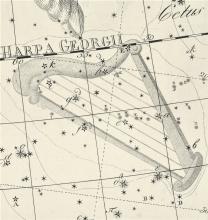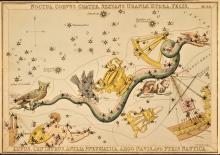Listen to today's episode of StarDate on the web the same day it airs in high-quality streaming audio without any extra ads or announcements. Choose a $8 one-month pass, or listen every day for a year for just $30.
You are here
Lynx
A faint constellation with an ironic name is climbing into view in the evening sky. Lynx is in view in the northeast by the time the sky gets fully dark. But “in view” is relative. The constellation is above the horizon, but most of its stars are so faint that you need especially clear, dark skies to see them. Skywatchers in light-polluted cities have no chance.
And that’s where the irony about its name comes in. Although it’s formally named for a small wildcat, the name was picked because you need the eyes of a lynx to see it.
Lynx was created in 1687 by Johannes Hevelius. He drafted several constellations by picking regions of the sky with few bright stars. Although most astronomers were using telescopes by then, Hevelius did most of his observing with his eyes alone. They were sharp eyes, and Hevelius was proud of his vision. So he named this constellation in part as a tribute to his own eyesight.
The brightest star is Alpha Lyncis. It’s about 200 light-years away. It’s more than 50 times the diameter of the Sun, and close to 700 times the Sun’s brightness. It’s that big and bright because it’s past the prime of life. It’s puffed up to giant proportions, which makes it especially bright.
Lynx is a zig-zagging trail of stars between the Big Dipper and the twins of Gemini. Alpha Lyncis is at the bottom of that trail, so it clears the horizon last — one of the few stars that you don’t need the eyes of a lynx to see.
Script by Damond Benningfield





